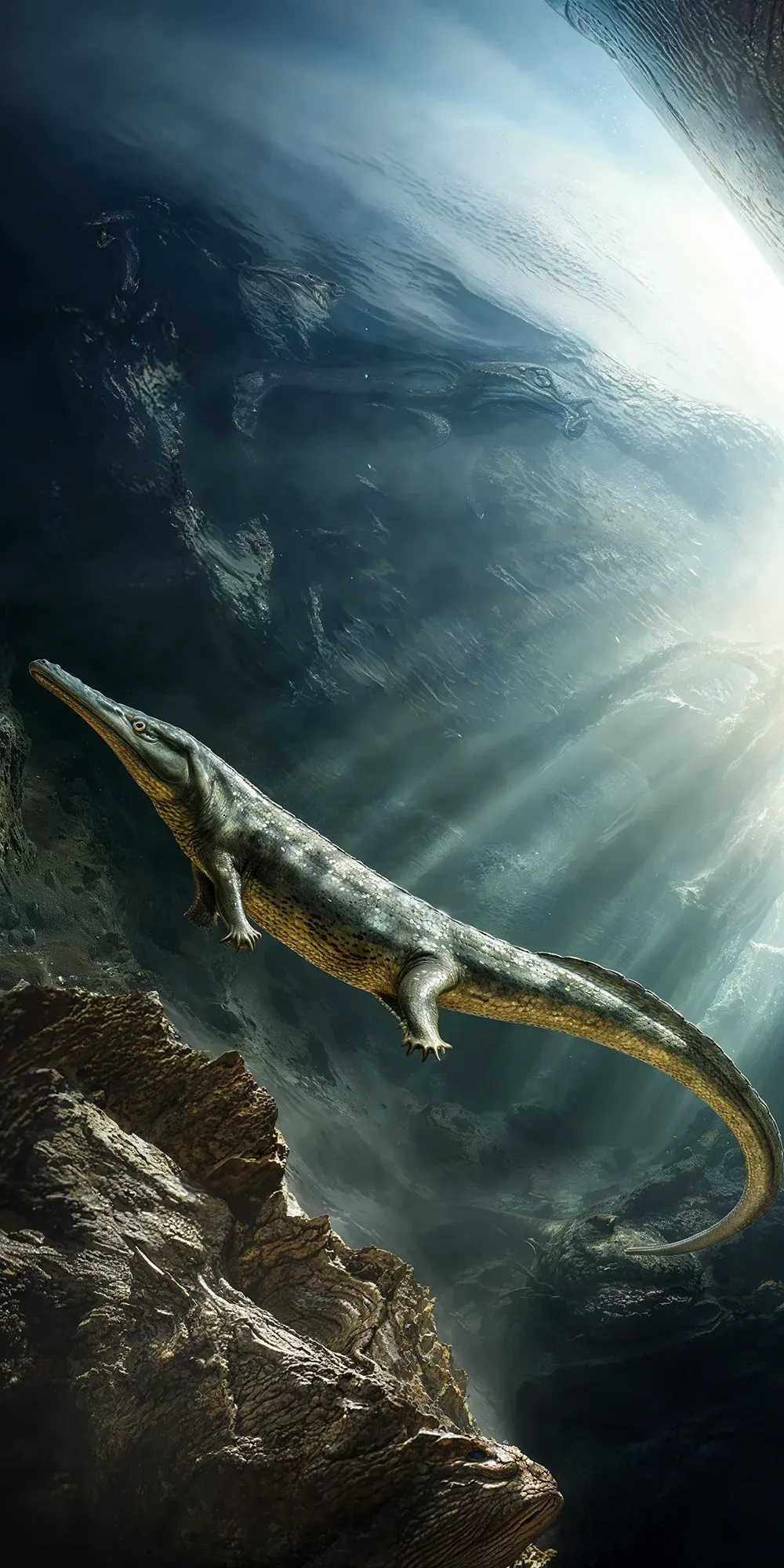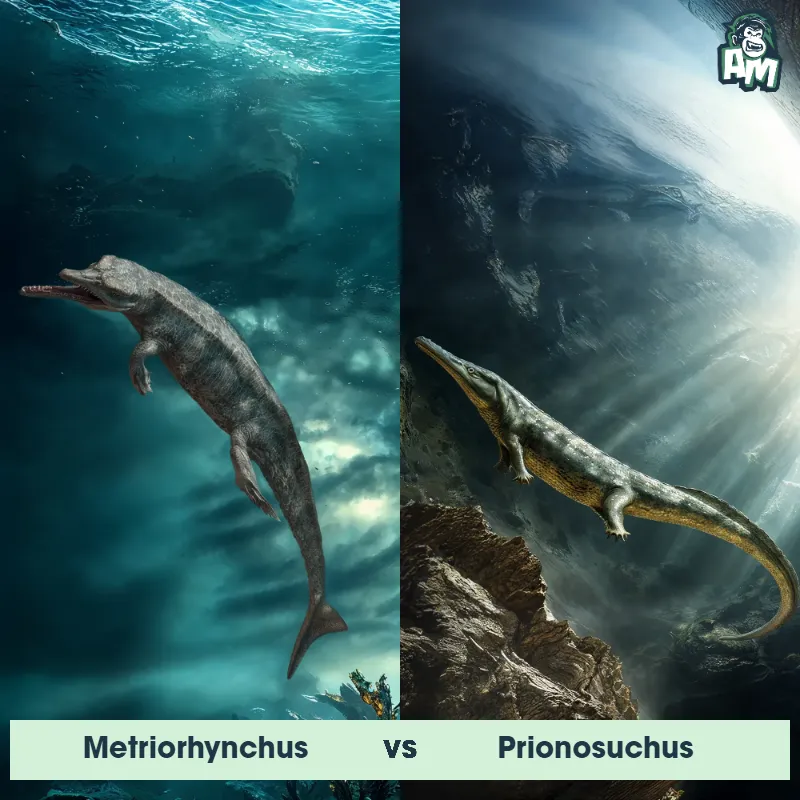The Prionosuchus
The Prionosuchus, also known as the "scissor-toothed terror," was a prehistoric amphibian that lived during the Late Carboniferous and Early Permian periods. It was a large predator with a long, slender body, short legs, and a flat, crocodile-like head with sharp, interlocking teeth. Prionosuchus could grow up to 31 feet in length and weighed around 1,100 pounds. It likely hunted aquatic prey in freshwater environments.

| Prionosuchus | |
|---|---|
| Size | Up to 9 meters (around 29.5 feet) |
| Weight | Around 1 ton (approximately 907 kg) |
| Speed | 20-25mph (32-40km/h) |
| Key Strength | Powerful jaws and sharp teeth |
| Biggest Weakness | Slower movement on land |
| Scientific Name | Prionosuchus |
| Family | unknown |
| Habitat | aquatic |
| Geography | Permian period |
| Diet | Carnivorous |
| Lifespan | 10 years - 15 years |

The Prionosuchus
The Prionosuchus, also known as the "scissor-toothed terror," was a prehistoric amphibian that lived during the Late Carboniferous and Early Permian periods. It was a large predator with a long, slender body, short legs, and a flat, crocodile-like head with sharp, interlocking teeth. Prionosuchus could grow up to 31 feet in length and weighed around 1,100 pounds. It likely hunted aquatic prey in freshwater environments.
Fun Fact: Prionosuchus had one of the longest and most flexible skulls of any known amphibian, allowing it to open its mouth wide to catch and swallow large prey items.
| Prionosuchus | |
|---|---|
| Size | Up to 9 meters (around 29.5 feet) |
| Weight | Around 1 ton (approximately 907 kg) |
| Speed | 20-25mph (32-40km/h) |
| Key Strength | Powerful jaws and sharp teeth |
| Biggest Weakness | Slower movement on land |
| Scientific Name | Prionosuchus |
| Family | unknown |
| Habitat | aquatic |
| Geography | Permian period |
| Diet | Carnivorous |
| Lifespan | 10 years - 15 years |
Prionosuchus Matchups
We use AI to simulate matchups between the Prionosuchus and other animals. Our simulation considers size, strength, and natural predatory behaviors to determine the most likely outcome.

Can't find the Matchup you want?
Create Your Own MatchupPrionosuchus: Diet, Predators, Aggression, and Defensive Behaviors
What did Prionosuchus eat?
Prionosuchus were large, carnivorous amphibians that primarily fed on other aquatic creatures such as fish, smaller amphibians, and even small reptiles. Their sharp teeth and powerful jaws allowed them to efficiently capture and consume their prey.
Did Prionosuchus have any predators?
As apex predators of their time, adult Prionosuchus likely had few natural predators. However, their eggs and young may have been vulnerable to larger predators such as other amphibians or early reptiles that inhabited their environment.
Were Prionosuchus aggressive?
Prionosuchus were likely territorial and aggressive towards other individuals, especially when it came to competing for food or mating partners. Their large size and powerful jaws would have made them formidable opponents in any confrontations.
Did Prionosuchus fight?
Prionosuchus may have engaged in physical confrontations with rivals for territory or mates. Their strong bodies and sharp teeth would have allowed them to inflict significant damage on each other during fights, potentially leading to injuries or even death.
How did Prionosuchus defend themselves?
To defend themselves against potential threats, Prionosuchus likely relied on their size, strength, and aggressive behavior. They may have used their sharp teeth and powerful jaws to scare off predators or rivals, as well as their agility in water to evade danger.
What was the biggest weakness of Prionosuchus in a fight?
Despite their formidable size and strength, Prionosuchus had a vulnerability in their relatively slow movement on land. If confronted by a faster or more agile predator, they may have struggled to defend themselves effectively outside of the water, making them more susceptible to attacks in such situations.
Fun Fact: Despite its impressive size and fearsome appearance, Prionosuchus was not a dinosaur but rather an amphibian, making it more closely related to modern frogs and salamanders.
Fun Fact: Fossil evidence suggests that Prionosuchus may have exhibited some form of parental care, as the remains of juvenile individuals have been found near adult specimens, implying some level of social behavior or protection of offspring.











